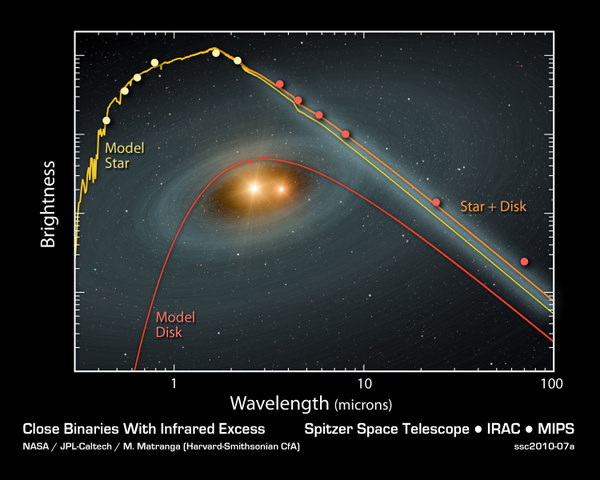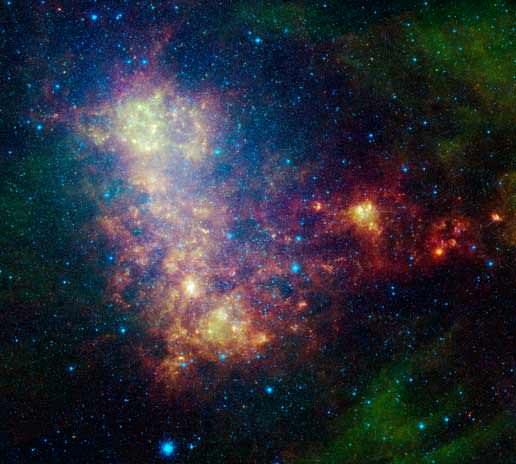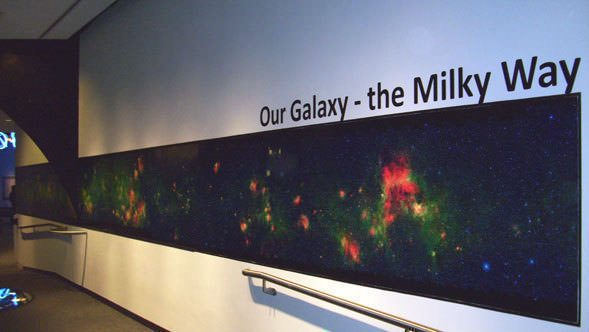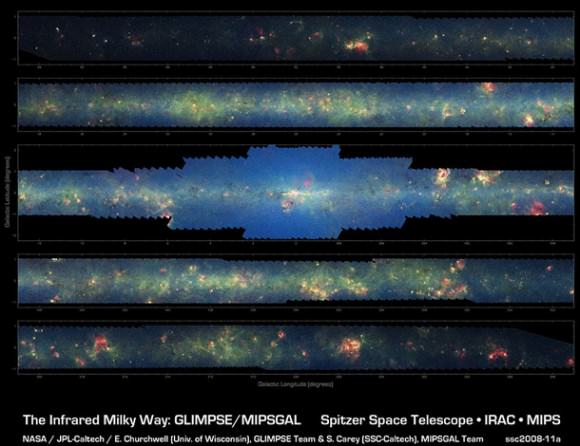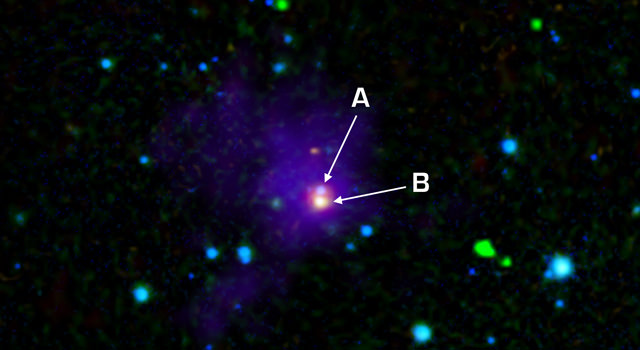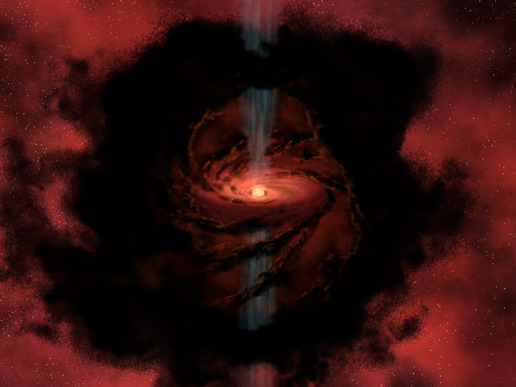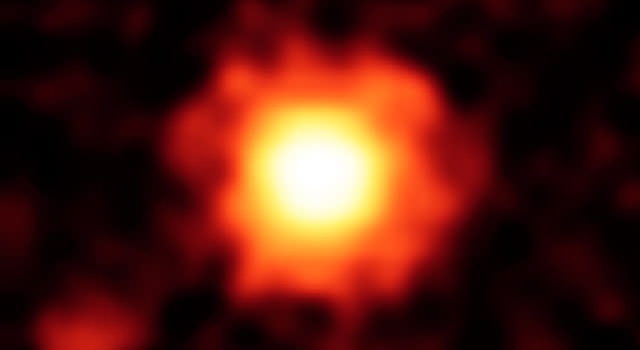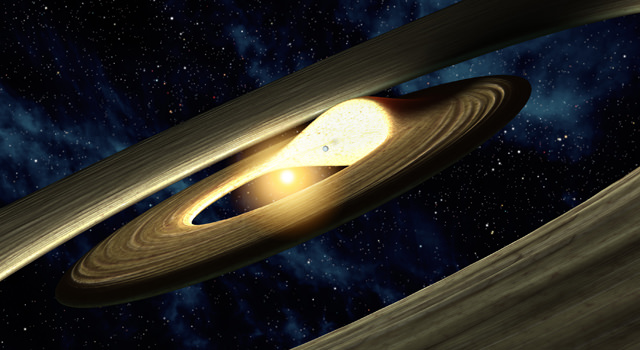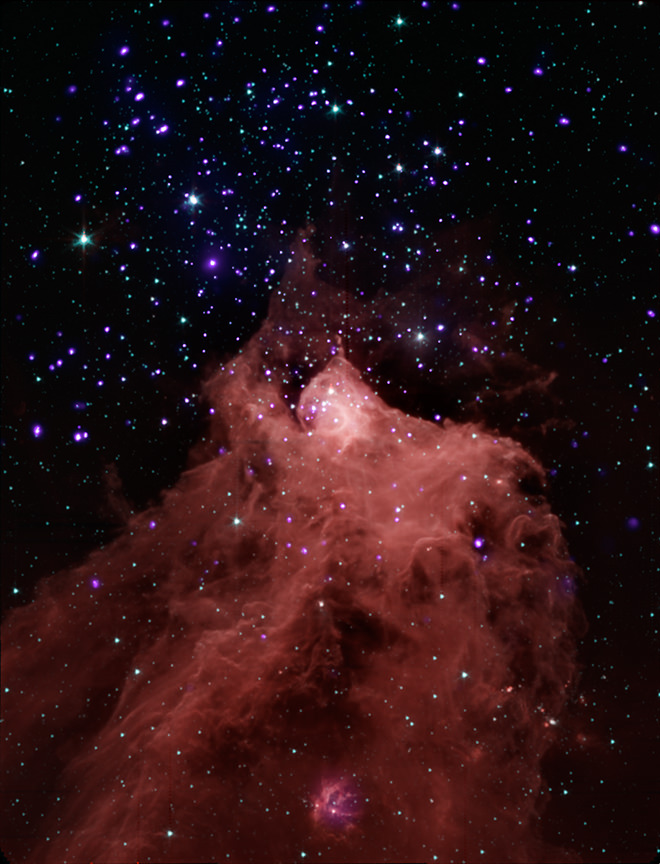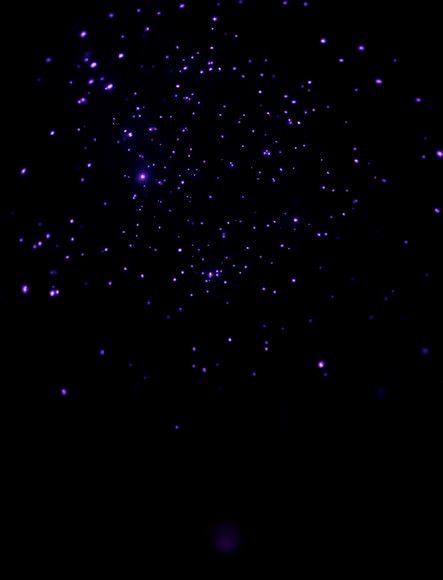[/caption]
Astronomers studying double star systems where the two stars are extremely close have found a pattern of destruction. While there probably isn’t a Star Wars-like Death Star roaming the Universe, tight binary systems might provide the equivalent of Darth Vader’s favorite weapon. “This is real-life science fiction,” said Jeremy Drake of the Harvard-Smithsonian Center for Astrophysics. “Our data tell us that planets in these systems might not be so lucky — collisions could be common. It’s theoretically possible that habitable planets could exist around these types of stars, so if there happened to be any life there, it could be doomed.”
Using the Spitzer Space Telescope, Drake and his team spotted a surprisingly large amount of dust around three mature, close-orbiting star pairs, that might be the aftermath of tremendous planetary collisions.
Drake is the principal investigator of the research, published in the Aug.19 issue of the Astrophysical Journal Letters.
The particular class of binary stars in the study are extremely close together. Named RS Canum Venaticorums, or RS CVns for short, they are separated by only about 3.2-million kilometers (two-million miles ), or two percent of the distance between Earth and our sun. The binaries orbit around each other every few days, with one face on each star perpetually locked and pointed toward the other.
These stars are familiarly like our own Sun – about the same size and probably about a billion to a few billion years old — roughly the age of our sun when life first evolved on Earth. But these stars spin much faster, and, as a result, have powerful magnetic fields, and giant, dark spots. The magnetic activity drives strong stellar winds — gale-force versions of the solar wind — that slow the stars down, pulling the twirling duos closer over time.
This is not a good scenario for planetary survival.
As the stars cozy up to each other, their gravitational influences change, and this could cause disturbances to planetary bodies orbiting around both stars. Comets and any planets that may exist in the systems would start jostling about and banging into each other, sometimes in powerful collisions. This includes planets that could theoretically be circling in the double stars’ habitable zone, a region where temperatures would allow liquid water to exist. Though no habitable planets have been discovered around any stars beyond our sun at this point in time, tight double-star systems are known to host planets; for example, one system not in the study, called HW Vir, has two gas-giant planets.
“These kinds of systems paint a picture of the late stages in the lives of planetary systems,” said Marc Kuchner, a co-author from NASA Goddard Space Flight Center. “And it’s a future that’s messy and violent.”
The temperatures around these systems measured by Spitzer are about the same as molten lava. The astronomers says that dust normally would have dissipated and blown away from the stars by this mature stage in their lives. They conclude that something — most likely planetary collisions — must therefore be kicking up the fresh dust. In addition, because dusty disks have now been found around four, older binary systems, the scientists know that the observations are not a fluke. Something chaotic is very likely going on.
If any life forms did exist in these star systems, and they could look up at the sky, they would have quite a view. Marco Matranga, lead author of the paper, also from Harvard-Smithsonian said, “The skies there would have two huge suns, like the ones above the planet Tatooine in ‘Star Wars.'”
The research was published in the Aug.19 issue of the Astrophysical Journal Letters.
Source: JPL

